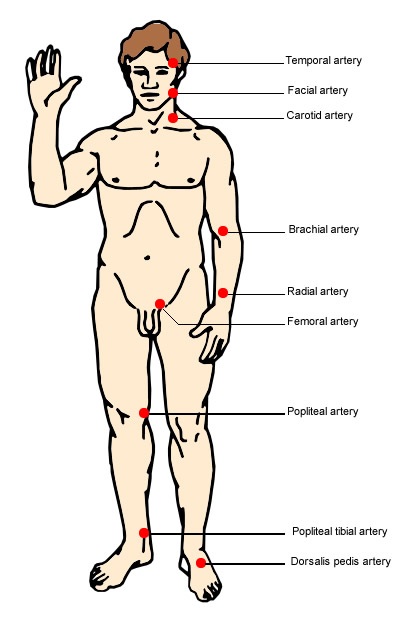What is Heart Rate?

The normal heart beats from its formation within the mother’s womb until death.
Heart rate is the number of heartbeats per unit of time. Usually heart rate is expressed as beats per minute (BPM).
The heart beats to supply oxygenated clean blood from the left ventricle to the blood vessels of the body via the aorta.
As the need for oxygen changes in various situations, like exercise, sleep and so forth, the heart rate changes accordingly.
Why do healthcare professionals measure heart rate?
Heart rate measurement is used by healthcare professionals to aid in diagnosis, follow up of several medical conditions including heart diseases.
What is a normal heart rate?
Normally humans have their heart rate between 70 to 90 beats per minute. Athletes have a lower basal heart rate while stress, exercise and anxiety in normal persons often raises the heart rate.
How is heart rate measured?
Heart rate is usually measured by finding the pulse in the body. The pulse is felt by the pads of the index and middle fingers of the examiner.
At each beat the heart pumps blood into the blood vessels. As the blood flows into the blood vessels the blood vessels expand and this is felt as a pulse.
This pulse rate is felt at any part of the body where the arterial pulsation is transmitted to the skin surface especially when it is compressed against an underlying structure like bone.
Some of the pulse sites include:-
- Temporal artery by the sides of the forehead
- Facial artery at the angle of the jaws
- Carotid artery in the neck
- Brachial artery
- Radial artery at the wrist
- Femoral artery at the groin
- Popliteal artery behind the knees
- Posterior tibial artery
- Dorsalis pedis artery over the foot

Other ways to measure the heart rate
Pulse rate or heart rate can also be determined and using an electrocardiograph, or ECG or heart rate monitors. Heart rate monitors allow accurate measurements of the heart rate during exercise as well as during rest.
Sources
- http://www.rbht.nhs.uk/patients/condition/heart/
- www.uhs.nhs.uk/…/Bradyarrhythmias-patientinformation.pdf
- www.uhs.nhs.uk/…/Tachyarrhythmias-patientinformation.pdf
- http://serendip.brynmawr.edu/sci_edu/waldron/pdf/HeartRateProtocol.pdf
- knowledgetranslation.ca/…/Ref%20ID%208067-20090628231006.pdf
Further Reading
- All Heart Rate Content
- Target Heart Rate
- Heart Rate Reserve
- Heart Rate Abnormalities
Last Updated: Jun 5, 2019

Written by
Dr. Ananya Mandal
Dr. Ananya Mandal is a doctor by profession, lecturer by vocation and a medical writer by passion. She specialized in Clinical Pharmacology after her bachelor's (MBBS). For her, health communication is not just writing complicated reviews for professionals but making medical knowledge understandable and available to the general public as well.
Source: Read Full Article